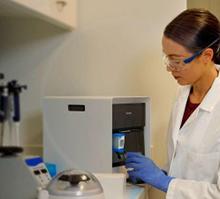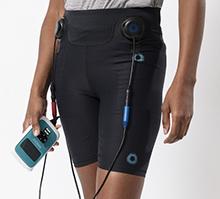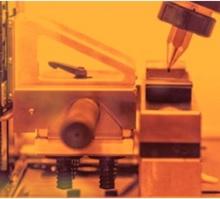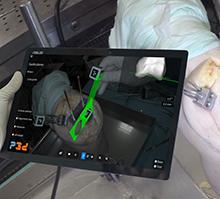Technology transfer case studiesOverview
Technology transfer case studies

The technology transfer case studies illustrate how patents facilitate technology transfer from R&D-conducting organisations and promote market success. The examples cover a range of economic sectors, countries and types of technology transfer. Each case study provides key takeaways for stakeholders in universities, other public research organisations and businesses. Overall, they demonstrate the importance of patents for technology transfer to start-ups, spin-offs and established companies.
Case studies
Case studies
Select a company name to access more information and downloadable materials.
Boosting the immune response to fight cancer
- The end of an R&D project or business venture need not mean the end for the technology involved as long as the main actors remain committed and maintain control over IP rights.
- Setting up licence agreements combining multiple types of payments may safeguard a “portfolio of commercial possibilities” and can maximise the value of the technology for the parties involved.
- A system in which licensing agreements include the right to use improvements made by other licensees is a great way to continuously increase the value of a platform technology and, simplify negotiations in the long term.
- Broader protection of the platform through a combination of patents and trade secrets can provide better protection against infringement and also extends the protection period.
| Technical field | Country | Main product | Technology transfer model |
|---|---|---|---|
| Biotechnology | Austria | Immunology vaccines | Technology licensing |

| Type of material | Download |
|---|---|
| Case study | OncoQR |
| Podcast | A proprietary platform to fight cancer: a technology transfer case study |
| Review article | Creating IP for impact: Three EPO case studies (EN) |
Smarter prognostic tests for early-stage breast cancer
- For university inventions, licensing a patented technology to a spin-out company can help increase the technology readiness level (TRL) and the probability of a successful commercial launch.
- Research grants can give more time and flexibility to develop technologies and leverage collaborations, while preventing the early dilution of equity in the spin-out company.
- Strong patent protection is an essential asset for a life science spin-out company in helping to secure initial investment.
- The appointment of a commercially experienced CEO with relevant sectoral experience can be crucial to the company's ability to raise investment and drive product development
| Technical field | Country | Main product | Technology transfer model |
|---|---|---|---|
| Biotechnology | Ireland | Diagnostic tests | University spin-off Company acquisition |

| Type of material | Download |
|---|---|
| Case study | OncoMark |
| Review article | Creating IP for impact: Three EPO case studies (EN) |
Textiles for the extreme
- Combining private commercial mechanisms with informal university support can form a valuable public-private partnership for effective and efficient technology transfer.
- Capturing niche markets to build sales and brand awareness is a useful entry into larger markets with higher entry barriers.
- Involving top managers and inventors in the patent portfolio building process is vital to the strategic relevance of patent protection.
- Consider patenting further along the value chain, and protecting applications of a technology close to the consumer market, to increase the scope of patent protection and build a comprehensive control position.
| Technical field | Country | Main product | Technology transfer model |
|---|---|---|---|
| Technical textiles | Sweden |
Spread tow |
Public-private partnership; university spin-off |

A new weaving method using composite material was the basis for the foundation of Swedish start-up Oxeon. IP rights for the technology helped to attract private investment. Oxeon also benefitted from business support from the Chalmers University of Technology entrepreneurship centre. This combination of private ownership and public innovation support led to the commercialisation of innovative textiles in the sports, industrial and aerospace sectors and the licensing of the weaving technology.
| Type of material | Download |
|---|---|
| Technology transfer case study |
Oxeon (EN) |
| Article | From research to lift-off. Three EPO case studies (EN) |
| Podcast |
Improving quality of life
- In academy-industry collaborations, recognise all partners' needs and define incentives and criteria so that the company can act as the commercial partner.
- A joint ownership management agreement is necessary to facilitate later commercialisation if joint foreground IP is anticipated.
- The deal structure should always be benchmarked so that it is fair and reasonable and reflects industry norms.
- Agree on key development and commercial milestones early, to guide and facilitate market success, but be willing to amend as necessary.
| Technical field | Country | Main product | Technology transfer model |
|---|---|---|---|
| Medical devices | Ireland | Novel training device for the treatment of stress urinary incontinence | Technology transfer office as facilitator for university spin-off |

Research collaboration between University College Dublin (UCD) and Bio‑Medical Research (BMR) led to the development of a novel training device for the treatment of stress-induced urinary incontinence. UCD licensed the technology to BMR, which validated the device in clinical trials, secured regulatory approval and launched it in Europe. BMR established Atlantic Therapeutics as a spin-out company to secure investment to target the US market. Atlantic Therapeutics, its flagship product, offers patients safe, non-invasive and cost-effective treatment for stress-induced urinary incontinence, improving the quality of lives.
| Type of material | Download |
|---|---|
| Technology transfer case study | |
| Article | From research to lift-off. Three EPO case studies (EN) |
| Podcast | Improving quality of life: a technology transfer case study |
Healing wounds
- A well-defined IP policy, qualified commercialisation experts, the support of university administration and a widespread network are critical success factors for IP-based spin-off companies.
- Spin-off and corporate partnership models are attractive approaches which can be widely implemented by technology transfer offices.
- The EPO's IPscore tool makes it possible to assess, qualitatively analyse, graphically visualise and document the pros and cons of technologies and research projects.
- Involving a global IP and licensing network can provide deeper insights and novel pathways for better IP strategy and IP management facilitating commercialisation.
| Technical field | Country | Main product | Technology transfer model |
|---|---|---|---|
| Medical equipment | Türkiye | Method to produce web-like structure for wound treatment that is both biocompatible and biodegradable | Technology transfer office support; university spin-off; partnership with big pharma company |

This product to treat open wounds, such as diabetic ulcers, is the result of R&D carried out by four female inventors in the laboratory of Türkiye's Ege University. They secured IP protection early on, with the help of the local technology transfer office. However, initial attempts at commercialisation using licensing failed. A start-up acceleration programme encouraged the female inventor team to create the start-up Dermis Pharma. Thanks to its strong IP, the young company managed to secure the necessary venture capital funding for cost-intensive clinical trials and product development. An IP-assignment deal with a big Turkish pharma company sealed a corporate partnership and accelerated the commercialisation process.
| Header 1 | Header 2 |
|---|---|
| Technology transfer case study |
Dermis Pharma (EN) |
| Review article | From research to lift-off. Three EPO case studies (EN) |
| Podcast |
The determination to heal wounds: a technology transfer case study |
Cycling safely into the future
- Given the right conditions, for example proper training, talented researchers and inventors can also become good managers.
- It is important for companies undergoing technology redesign and market customisation to align technology and patents. Protecting patents should be part of a continuous strategy, rather than a one-off exercise.
- A well-defined collaboration framework agreement facilitates IP generation, reduces transaction costs and creates incentives for all partners.
- IP protection is a key element of a variety of business models, including open-ended solutions, and allows you to keep control of your technology while collaborating with others.
| Technical field | Country | Main product | Technology transfer model |
|---|---|---|---|
| Road vehicles | Italy | Anti-lock braking system (ABS) for e-bikes | Start-up accelerator and university spin-off |

The result of collaboration between a research team at the Politecnico di Milano and e-Novia, a deep-tech company creator, Blubrake was formed to commercialise an innovative e-bike ABS. In a market dominated by large and established international companies, patents were used to improve market penetration strategy and recognition. Initial patent applications for customised technology features and design were aimed at protecting the company's own unique selling proposition in the e-bike market.
| Type of material | Download |
|---|---|
| Technology transfer case study |
Blubrake (EN) |
| Podcast |
Changing the 3D printing landscape
- Building up a network of trusted partners is essential for technology transfer at any level. The creation of technical solutions to overcome complex problems often requires an interdisciplinary approach. Application-driven R&D needs industrial sponsors to engage in joint R&D projects.
- In projects funded by third-parties, the TTO's IP management system must secure control over the allocation of usage rights in order to increase the chances for broad commercial exploitation of academic technologies in as many applications as possible.
- A broad IP portfolio in terms of the number of patent families, claimed technologies and geographical scope provides the core basis for young spin-off companies seeking funding and partnerships and looking to access markets.
- Long-term business relationships are crucial for successful technology transfer. Understanding, considering and defining each party's requirements helps to build the trust needed to establish and maintain such relationships.
| Technical field | Country | Main product | Technology transfer model |
|---|---|---|---|
| Additive manufacturing (AM) | Austria | AM machines and high-performance polymers for industrial applications | Industry-university collaboration and university spin-offs |

The development of a long-term technology transfer strategy with smart distribution of usage rights allowed the Technical University of Vienna to achieve scientific breakthroughs and commercialisation success with its industry partner, Ivoclar. This led to the creation of two university start-ups. As one of these two start-ups, Cubicure was able to benefit from a strong patent portfolio during early-stage funding rounds and to build strategic partnerships.
| Type of material | Download |
|---|---|
| Technology transfer case study |
Cubicure (EN) |
| Podcast | 3D printing high-performance polymers |
| Video | 3D printing high-performance polymers |
Disrupting surgical navigation
- Universities should continue supporting their spin-offs once the licence agreement is signed and the spin-off has been created. In most cases, licence agreements should include the option to be adjusted to react quickly to rapidly changing economic environments.
- Protecting the IP of the core technologies is a critical success factor in the initial phase of technology and business development.
- IP awareness among researchers is key to ensuring that research results are properly assessed and protected prior to novelty-destroying publication.
| Technical field | Country | Main product | Technology transfer model |
|---|---|---|---|
| Medical imaging | Portugal | Computer-assisted surgery (CAS) systems | University spin-off |

A research project to improve surgical navigation combined with the entrepreneurial mindset of the lead researcher at the University of Coimbra (UC) in Portugal led to the creation of Perceive3D. Broad patent protection and a vibrant innovation ecosystem made it possible to target international markets and to secure continuous investment during the long development and approval phases, paving the way for market success.
| Type of material | Download |
|---|---|
| Technology transfer case study |
Perceive3D (EN) |
| Podcast |
Bringing augmented reality into the operation room: a technology transfer case study |
Sensors for blades
- It is essential for the founding team to have access to business competence. The technology transfer office cannot provide this, as it is not part of the start-up’s operational team.
- Patents can work as an initial indicator of professionalism and competiveness when a young start-up with new technology becomes visible to established companies.
- Solid patent protection is a prerequisite for many investors looking to invest in technology start-ups. However, cash flow-generating activities at an early stage can help to provide funds until market introduction and are also positive signals to investors.
- While core IP has strategic value and should be prioritised, the transfer of non-core IP provides an opportunity for rapid monetisation.
| Technical field | Country | Main product | Technology transfer model |
|---|---|---|---|
| Measurement technology | Germany | Fibre optic sensors and measurement solutions for wind turbines | University spin-off |

After they had secured access to IP from the Technical University of Munich (TUM) and one of the co-founders had gained business experience, the team of young researchers had all of the ingredients necessary to secure initial funding for the creation of fos4X. In a market of mostly large and international players, a steadily growing and smartly managed patent portfolio helped the young company to secure financing and to become a major provider of measurement solutions for wind power installations. Due to its success and strong IP portfolio, fos4X was acquired by the Danish company PolyTech in 2020.
| Type of material | Download |
|---|---|
| Technology transfer case study | fos4X (EN) |
| Podcast |
See also
The EPO recommend Enterprise to also explore the following content: